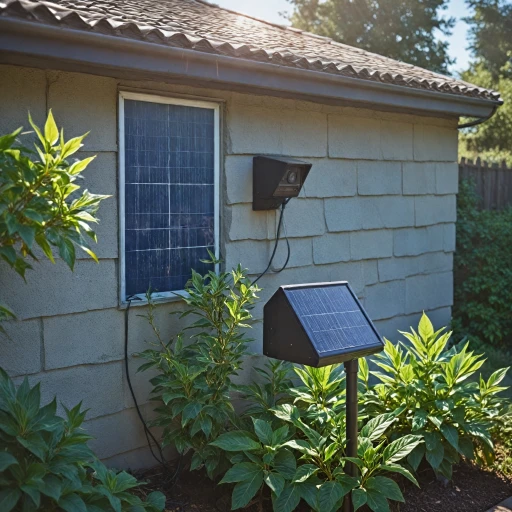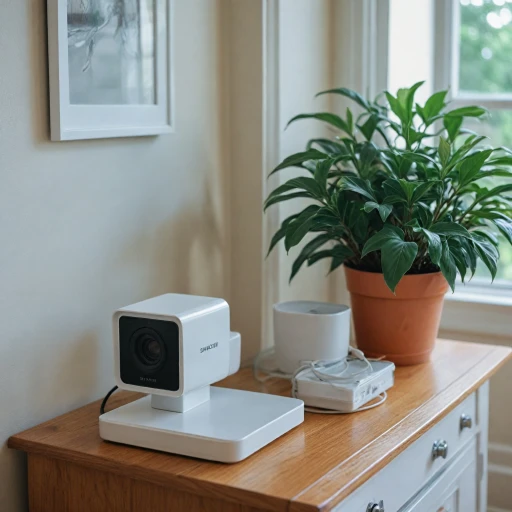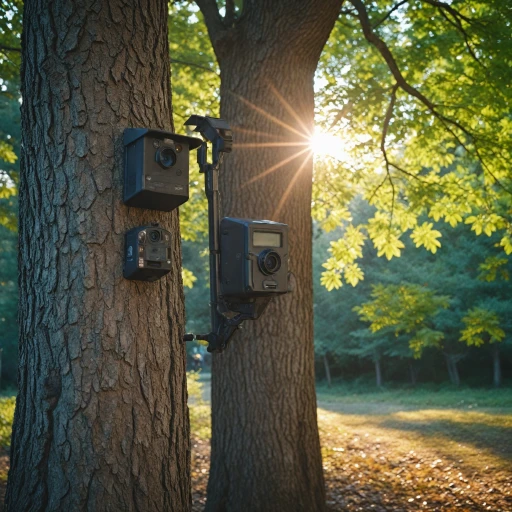Understanding the Benefits of Solar-Powered Trail Cameras
Exploring the Advantages of Solar-Powered Trail Cameras
Harnessing the power of the sun to operate trail cameras has become increasingly popular due to numerous advantages it offers. Solar-powered trail cameras provide an eco-friendly solution to keeping these devices active and functional without relying on traditional energy sources. Here are some compelling reasons to consider transitioning to solar-powered technology for your trail cameras:- Cost-Effective Energy Solution: Utilizing solar panels reduces the need for disposable batteries, minimizing costs associated with frequent battery replacements. This not only makes it a cost-efficient choice but also a sustainable one, as it cuts down on waste.
- Extended Battery Life: The integration of a solar battery allows trail cameras to operate for extended periods compared to traditional batteries. This enhanced battery life is particularly beneficial for remote areas where regular battery swaps are inconvenient.
- Reliable Power Supply: Solar panels provide a consistent power supply, ensuring that your camera remains operational day and night. This reliability is crucial for continuous monitoring of trails and wildlife activities.
- Environmental Impact: Adopting solar power aligns with environmental consciousness by reducing carbon footprint and reliance on non-renewable energy resources.
- Enhanced Security Features: Many solar-powered trail cameras come equipped with advanced features like cellular connectivity and improved image resolutions, offering better reviews and ratings in terms of surveillance capabilities.
Choosing the Right Solar Panel for Your Trail Camera
Finding the Ideal Solar Panel for Your Trail Camera
When looking to enhance your trail camera setup with solar power, choosing the right solar panel is crucial. The correct panel can significantly extend the battery life of your camera, ensuring it remains operational for longer periods without manual intervention. Here’s what you need to consider:
- Power Requirements: Assess the power needs of your trail camera. Most cameras require a specific voltage and current to operate efficiently. A solar panel that provides adequate power is essential. Check the specifications and compatibility of the solar panel with your camera model.
- Battery Compatibility: Ensure the solar panel is compatible with the battery type used in your camera. Many trail cameras use lithium batteries, which are efficient and long-lasting. Opt for a solar panel that supports lithium battery charging for optimal performance.
- Size and Portability: Consider the size of the solar panel. A compact and lightweight panel is easier to install and manage, especially in remote locations. However, ensure it is large enough to capture sufficient sunlight to power your camera effectively.
- Durability and Weather Resistance: Trail cameras are often exposed to harsh weather conditions. Choose a solar panel that is rated for durability and can withstand rain, wind, and other environmental factors.
- Price and Reviews: While budget is a consideration, don’t compromise on quality. Check reviews and ratings from other users to gauge the performance and reliability of the solar panel. Look for sales or discounts to get a better deal.
By carefully selecting a solar panel that meets these criteria, you can enhance the efficiency and reliability of your trail camera setup, ensuring it remains a valuable tool in your home security system.
Installation Tips for Solar Panels on Trail Cameras
Setting Up Your Solar Panels Effectively
To ensure that your trail camera works optimally with a solar panel, proper installation is crucial. Making sure that your solar installation is seamless will help maximize battery life and performance.
- Secure the Connections: It's important for all cables to be securely connected. Poor connections can result in inconsistent power supply. Opt for high-quality cable over cheaper alternatives to prevent wear and tear.
- Mounting the Solar Panel: Position the solar panel in a location where it can receive ample sunlight throughout the day. Whether you are using a reveal solar panel or another model, angle it correctly for optimal solar exposure.
- Avoid Obstructions: Be mindful of shadows or seasonal changes that might affect sunlight exposure. Keep away from overhanging branches or building shadows that might reduce the panel efficiency.
- Compatible Accessories: Make sure that your camera solar setup includes compatible components. Not all solar panels match with every camera model and accessories, so verify compatibility in shop reviews beforehand.
Solar-powered setups may initially present challenges, such as ensuring a stable power pack. It may take some experimentation to find the right balance between panel size and lithium battery capacity.
Once your installation is appropriately handled, your solar-powered system will not only become more reliable but also environmentally friendly and cost-effective. Consider investing in panels that have been well-rated in user reviews to match the sale price with your expectations.
For further details on enhancing camera installation, consider exploring additional installation tips.
Maximizing Efficiency: Positioning and Maintenance
Optimizing the Placement and Maintenance of Solar Panels on Trail Cameras
To fully leverage the advantages of solar power for your trail cameras, it's crucial to focus on effective positioning and upkeep. Proper installation of solar panels is not just about attaching them to your device—it's about ensuring they perform optimally to sustain your camera’s power needs.
- Positioning for Maximum Solar Exposure: Carefully position your solar panels to receive maximum sunlight. This typically means facing them towards the south in the northern hemisphere to capture the most sunlight throughout the day. Avoid placing them under dense foliage or other structures that could obstruct sunlight, as this reduces the solar panel’s ability to charge the camera's battery pack effectively.
- Adjusting for Seasonal Changes: Be mindful of the changing position of the sun at different times of the year. Adjust the tilt of your solar panels accordingly to maximize exposure during summer and winter months.
- Maintenance Tips to Extend Battery Life: Regular maintenance is key in maximizing the battery life and efficiency of your trail camera solar system. Ensure that solar panels are clean, as dust and debris can significantly decrease their efficiency. A simple wipe-down with a soft, damp cloth can do wonders.
- Keep an Eye on the Connections: Regularly inspect connections and cables for any signs of wear or damage. Loose or damaged cables can disrupt the transfer of power from the solar panel to the camera, potentially leading to power failures.
Some accessories, like solar battery packs and proper cabling, can further enhance the setup. Products rated highly in reviews, like the Sol Pak and Stealth Cam, come with robust support options and can be compared in terms of price and compatibility with your current setup. While shopping, look for options that reveal a good balance between cost and quality, and consider accessories that can be easily integrated into existing systems for seamless operation.
Troubleshooting Common Issues with Solar-Powered Trail Cameras
Addressing Solar Power Glitches in Your Trail Cameras
Using solar power for your trail cameras can be highly beneficial, yet it's not uncommon to encounter some challenges. Below, we'll explore common issues and suggest solutions to keep your setup running smoothly.- Battery Not Charging: If your camera's battery isn't charging as expected, first, check if the solar panel is properly connected. Examine all cables and connectors for any wear or damage that might disrupt power flow. Ensure that your solar panel is suitably rated in relation to the camera's power requirements, usually specified in mAh.
- Battery Draining Quickly: Rapid battery drain is a significant concern, often due to insufficient sunlight. Make sure your solar panel is positioned for maximum sun exposure, free from obstructions like trees or buildings. Additionally, verify if the battery pack is a robust lithium battery, which often offers better durability and battery life. Consider investing in a higher capacity power pack if needed.
- Inconsistent Power Supply: Unstable or fluctuating power can interfere with a trail camera's performance. In such cases, check the connection points of your solar panel and battery pack for any loose ends. Investing in quality solar panels with excellent reviews and a good price-to-performance ratio can ensure a consistent power flow.
- Panel Maintenance: Regular cleaning of your solar panels is essential for maintaining efficiency. Dust and debris can hinder solar absorption, leading to poor camera performance. Consistent checks and maintenance routines can greatly extend the lifespan of your equipment.
Integrating Solar-Powered Trail Cameras into Your Home Security System
Introducing Solar-Powered Trail Cameras to Home Security
Solar-powered trail cameras can be a game-changer when integrated into your home security system. Not only do they offer an eco-friendly approach to surveillance, but they also provide continuous operation without the frequent need for battery changes.
Choosing Suitable Locations
When planning to incorporate trail cameras into your home security system, strategic placement is key. Consider popular entry points, dark areas, and places often overlooked, such as backyards. Positioning the camera in a location where it can maximize sunlight exposure is vital to ensure the solar panels can efficiently charge the lithium battery, optimizing the power pack's battery life.
Combining Trail Cameras with Existing Systems
If you already have a security system in place, solar-powered trail cameras can serve as a supplementary measure, adding layers of protection. These cameras can seamlessly blend into your current setup and offer cellular connectivity options for real-time monitoring. Using cellular trail cameras ensures you receive instant alerts, even in areas without Wi-Fi coverage.
Cost and Maintenance Considerations
While solar-powered trail cameras can have a higher initial cost due to the solar panel components, they often present a cost-effective solution in the long run. The price of individual solar panels and cameras varies, with various models available for different budget ranges. Also, a solar power pack will reduce the need for frequent battery replacements, making it an economically sound choice.
Popular Models and Accessories
Several brands offer highly rated models, each with distinct features. For instance, the Stealth Cam and the Reveal solar series are praised for their reliable performance and easy installation. Accessories, such as the Sol Pak, enhance the usability and versatility of your camera setup.
Monitoring and Adjustments
Regularly check your trail camera's solar panel alignment and battery status to maintain optimal performance. Reviewing product reviews and keeping updated with the latest sale price trends ensures you're getting the best deal without sacrificing quality. Keep an eye on the current price and consider shopping around for deals during panel sales.
Integrating solar-powered trail cameras can elevate your home security system, adding robustness and eco-sustainability while reducing long-term costs.






